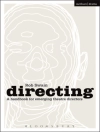Apparently from Virginia, Birt Acres appeared out of nowhere in Britain aged 35, without a trace of his former life. Yet immediately he became a prominent figure in the late Victorian photographic world. He soon teamed up with Robert Paul to make a moving picture camera and then shot the first commercial films in Britain in spring 1895, in parallel with the work of the Lumière brothers in France, before repeating this in Germany. His innovations included being the first to establish a dedicated venue for watching films, to give a Royal Command Performance of moving pictures, to create screen advertising, and to design a home movie camera.
A disdain for showbusiness led to Acres squandering the commercial opportunities he created, and initiated the erasure of his remarkable story. From early in the twentieth century, film historians have consistently underestimated and undervalued his achievements.
In this book, for the first time, we see a detailed and compelling portrait of Birt Acres, with substantial new research on his early work in moving pictures and on the careers of his associates, leading directly to new interpretations of the importance of this elusive pioneer. It draws on a wealth of fresh sources, with a massively expanded filmography supporting this re-evaluation. Written by three specialists in early film history, this volume significantly revises the received story of Birt Acres, at the same time casting new light on the beginnings of cinema in Britain.
Over de auteur
Peter Domankiewicz has worked professionally in film and television for decades as a screenwriter, director and producer. He has written about early film history for The Guardian and Sight and Sound, also contributing to The Oxford Dictionary of National Biography, The Who’s Who of Victorian Cinema and several academic journals.












